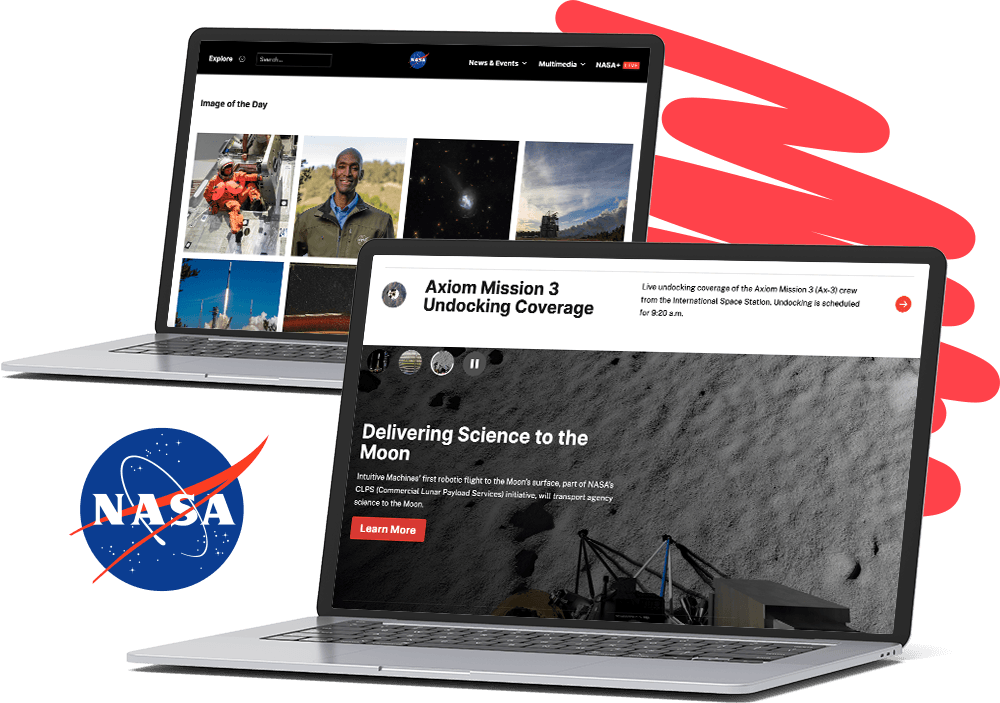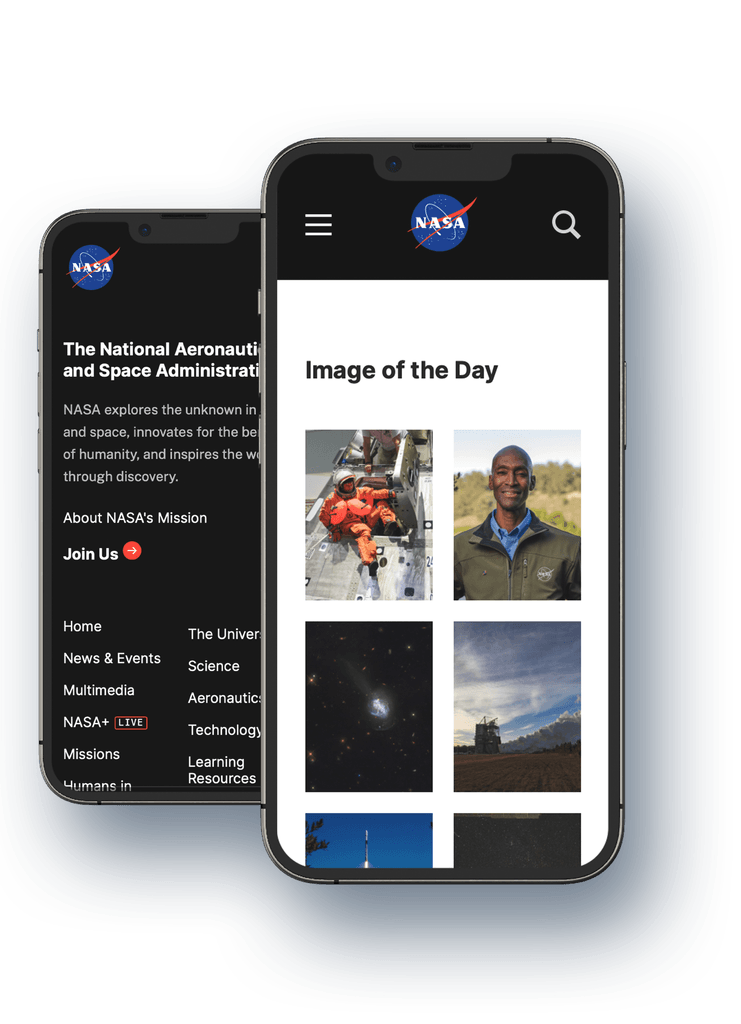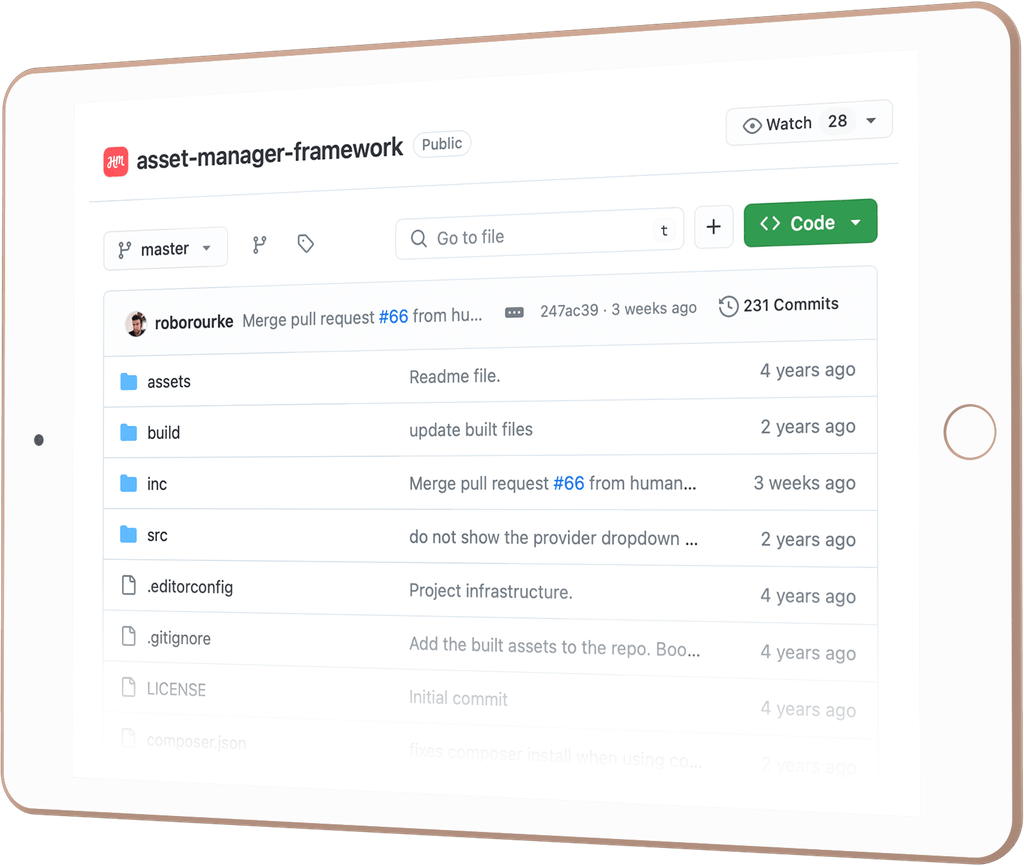Case study
Stellar open source collaboration: NASA x Lone Rock Point x HM
NASA’s CMS replatforming offered the perfect opportunity for Lone Rock Point to harness Human Made’s open source technology

Industry
Services
Humans

1. The project
A combination of the IDEA Act and the end-of-life for Drupal 7 gave US space agency NASA the chance to reconsider the CMS they were using for nasa.gov. WordPress agency Lone Rock Point led the development and implementation in WordPress, which would end up supporting 456 CMS users, 68,698 migrated pages, and 3,023 new landing pages.
Images are one of the key ways NASA tells its story, which includes some of the most iconic photographs in human history: ‘Image of the Day’ is one of the highest-traffic parts of the organisation’s site. One of the things on NASA’s wishlist was the ability to use their own image library repository to catalogue, manage and ensure attribution and accessibility for their images.

456
CMS users

68,698
migrated pages

3,023
new landing pages
2. Capitalising on open source solutions
Lead Application Developer on NASA’s flagship CMS Andrew Norcross was already familiar with Human Made and our work on open source projects, including our Asset Manager Framework.
Our AMF WordPress plugin provides a framework for integrating the contents of the standard WordPress media library with assets from an external provider. It handles the necessary integration with WordPress, leaving developers free to focus on the server-side API connection, with the intention being that the media manager, the block editor, the classic editor, the REST API, XML-RPC, and anything that calls wp.media() should ‘just work’.

“I know Human Made reliably maintains everything they open source, so I felt confident that the plugin was stable and dependable. Being a government agency, it was especially important to use tools coming from a reputable source for this project.”
Andrew Norcross, Lead Application Developer, NASA CMS, Lone Rock Point
Andrew estimates that around two months of development time was saved by capitalising on this existing solution from HM: building such a tool from scratch would have significantly extended project timeframes, and would have been “the most complicated thing built for NASA’s site”.

3. Efficiency and safeguards for NASA’s content creators
As a US government agency, NASA is subject to federal accessibility, disclosure, and accreditation rules. With between 50-100 articles and hundreds of images being uploaded every month, NASA’s teams needed an effective, efficient way to keep track of the metadata attached to each unique image.
At the time, content creators had to take around five steps to ensure images were compliant; from sourcing the image to adding alt text, it was a laborious task that could result in duplicate images or missing information due to a lack of safeguards in the editorial process.
Adding to the team’s frustration was the limitations of AI-powered solutions for image management: with an image library like NASA’s, where very specific, scientific-level information is required, AI tools all failed to identify the necessary distinctions between planets, stars, and other out-of-this-world phenomena.
Reducing the risk of accumulating media assets without the proper accessibility data applied, and ensuring that authors can’t fall foul of rules by accident, was key. The team was also keen to remove the pressure and expectation to concentrate on imagery so that authors could focus on scientific editorial content elements.
4. Seamless integration for a powerhouse CMS
Simplicity and ease-of-use were high on the list of must-haves for the team. As HM’s AMF plugin is self-contained and can be debugged quickly if needed, the team didn’t have to allocate or budget additional time from their roadmaps: it “just works”.
Users can operate the media library in the same way they always have, but with additional safeguards and time-saving functionality in place. Andrew estimates that users now save 5-10 minutes per image on average.

“People are stoked. It makes everybody’s life easier and no one has to think about it. Users thought the AMF came as standard, the integration was so seamless.”
Andrew Norcross, Lead Application Developer, NASA CMS, Lone Rock Point
From the users’ point of view, it’s one system, and no additional training beyond the WordPress media library basics was required. The cataloguing of images is efficient, and creates records as though the content were in the WP media library, ensuring consistency, no duplicates, effective record keeping, and standardisation across the board. Since its launch, only new and different types of media have been uploaded, evidencing a successful implementation.

5. The future is open source
The US government and its agencies have a preference for using open source tools where possible, and frequently open sources its own software.
With a mission to “help agency partners and developers save money and increase quality by promoting code reuse and educating and connecting the open source community”, building on HM’s AMF plugin was a natural choice for NASA’s flagship CMS.
Elements of the NASA project will be open sourced when practical, including releasing the API once code cleanup has been completed. For Andrew, it’s a no-brainer to turn to the open source community for such projects.
“I can’t imagine wanting to handcuff yourself to a single provider. NASA had a lot of requirements, and we were able to do everything they wanted and more with WordPress. From SEO, to forms, data protection, hosting, headless, video, and, of course the image repository, I’ve never encountered anything that can’t be done with WordPress.”
Andrew Norcross, Lead Application Developer, NASA CMS, Lone Rock Point
See our work
View all case studiesWork with us on your next project
Shoot us an email at sales@humanmade.com or complete the form below.
Want to join the team and help us on our next project?
We’re always looking for bright and driven humans to be part of Human Made.


